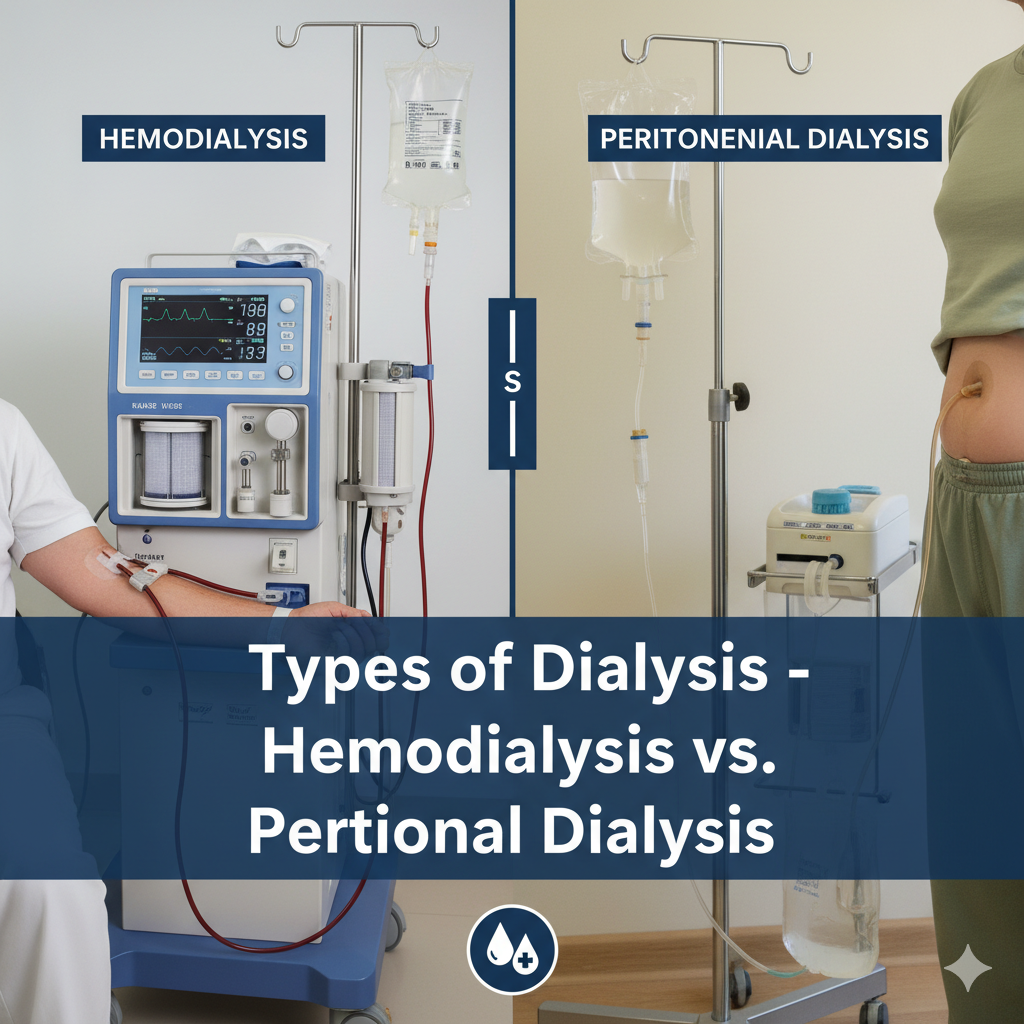Types of Dialysis - Hemodialysis vs. Peritoneal Dialysis
Choosing the right type of dialysis is one of the most important decisions you will make in your treatment journey. There are two main types of dialysis: hemodialysis and peritoneal dialysis. Each has unique characteristics, advantages, and considerations. Understanding both options empowers patients to work with their healthcare team to select the treatment that best fits their lifestyle, medical needs, and personal preferences.
Hemodialysis: The Basics
Hemodialysis is the most common form of dialysis worldwide. During hemodialysis, blood is removed from the body through a surgically created access point, typically in the arm. The blood flows through a dialyzer machine that filters out waste products and excess fluid. The cleaned blood is then returned to the body. Treatments typically last 3-5 hours and are performed three times per week at a dialysis center, though home hemodialysis is also available for suitable candidates.
Advantages of Hemodialysis
• Treatment is performed by trained healthcare professionals in a supervised setting
• Only requires treatment three times per week, leaving other days free
• Opportunity to connect with other patients and build a support community
• Immediate medical assistance available during treatment sessions
• No need to store dialysis supplies at home or perform treatments yourself
Peritoneal Dialysis: The Basics
Peritoneal dialysis uses the lining of your abdomen, called the peritoneum, as a natural filter. A soft catheter is surgically placed in the abdomen, and dialysis solution is introduced through this catheter into the peritoneal cavity. The solution absorbs waste products and excess fluid, then is drained out and replaced with fresh solution. This process can be done manually several times a day or automatically at night using a machine called a cycler.
Types of Peritoneal Dialysis
Continuous Ambulatory Peritoneal Dialysis involves manual exchanges performed 3-5 times throughout the day, with each exchange taking about 30-40 minutes. Automated Peritoneal Dialysis uses a machine to perform exchanges automatically while you sleep, typically over 8-10 hours, providing more freedom during the day.
Advantages of Peritoneal Dialysis
• Greater flexibility and independence with treatment at home or work
• Gentler, more continuous treatment that mimics natural kidney function
• No needles required for each treatment session
• Fewer dietary restrictions compared to hemodialysis
• Better preservation of remaining kidney function in early stages
Making the Right Choice
The best type of dialysis varies for each individual and depends on multiple factors including medical condition, lifestyle preferences, home environment, manual dexterity, support system, and overall health status. Your nephrologist will help evaluate these factors and recommend the most appropriate option. Some patients may even switch between types over time as their circumstances change. Remember, the goal is to find the treatment that allows you to live your fullest, most comfortable life.

